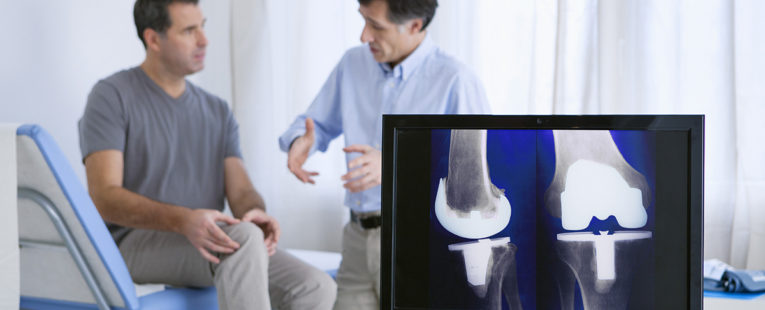Preparing for your joint replacement surgery requires more than just updating your Netflix queue.
Leonard Tiger Onsen, MD, orthopedic surgeon with OSF HealthCare, offers some things you can do in advance to help you have a smooth joint replacement journey.
1. Check your schedule
Joint replacement is an elective procedure, so depending on how much your life is affected by your joint, it might be worth delaying the procedure to a time when it’s more convenient for you.
Many patients prefer to replace a joint during the winter, since they’re more active in the summer.
“If you can, give yourself a bumper,” said Dr. Onsen. “You probably don’t want to have major life events in the 4 to 6 weeks after surgery.”
2. Learn everything you can
Talk with your orthopedic surgeon in advance to learn more about the surgery. Many have models or actual prosthetics you can hold in your hand to understand what your new joint is going to look and feel like. If your office provides an education program, take advantage of it.
“It’s helpful to understand just what you’re getting into,” Dr. Onsen said.
You can also find resources online to help you understand what’s ahead. If you have the stomach for it, you can watch the full surgery on YouTube. Many patients have also blogged or vlogged about their experience, which Dr. Onsen said is really helpful to understand the whole process.
3. Arrange for help
Even in the best case scenario, it will be at least two to three weeks before you can start driving and about a month before you start feeling close to normal.
From keeping the pantry stocked and cooking meals to getting to and from appointments, you’re going to need a lot of help in the meantime.
“It’s not something you can go through by yourself,” Dr. Onsen said. “Have a safety net in place, especially in the first week when your mobility will be most limited.”
If you don’t have friends or family who are able to help, you can look at staying in a rehabilitation center or arrange for home care.
4. Goof-proof your house
Set up a central location where you can comfortably spend your time after your surgery.
If you live in a multi-level home, pick one floor to stay on so you can avoid stairs, said Dr. Onsen. You’ll want to have easy access to the things you’ll need the most – such as a bathroom.
Then remove any potential obstacles around you, such as area rugs that you could trip on when you’re moving around.
5. Plan for pain
There’s no getting around it. Joint replacement surgery comes with pain. But a frank discussion with your surgeon can help prepare you for what to expect and guide you to the best pain management options.
“Pain is something that continually gets better, and there are a lot of tools that help,” said Dr. Onsen.
For some patients, it works best to switch to their at-home medicine plan while they’re still in the hospital. That way they can adjust to the schedule and lower doses while they still have the hospital staff to support them.
6. Be ready to work
 “The day of surgery is just one point in the process,” said Dr. Onsen. “Your overall outcome is determined by your recovery and rehab.”
“The day of surgery is just one point in the process,” said Dr. Onsen. “Your overall outcome is determined by your recovery and rehab.”
Meet with your physical therapist in advance to learn exactly what your recovery will entail. A lot of people are surprised when they’re expected to get up and walk the same day or next day, Dr. Onsen said.
7. Go clothes shopping
You don’t actually need to buy a whole new wardrobe (unless you want to), but keep in mind what clothing will work for the entire recovery process. Immediately after your surgery, you’ll want clothing that is comfortable and easy to get on or off.
Another thing to keep in mind is what you wear to follow-up appointments, said Dr. Onsen. Even as you start feeling better and more comfortable, you’ll want to stick with the same easy clothing so the surgeon can inspect the joint.
8. Fill your time
And, yes, you probably will want to update your Netflix queue. Or borrow some books from a friend. Or purchase a new book of crossword puzzles.
If you’re used to being active, being saddled to your bed or chair can be tough. Make sure you line up easy activities to fill your time and keep you sane while you’re recovering.
“Especially in early recovery, things can feel slow,” said Dr. Onsen. “Having things to occupy your mind in that first week can help keep your mind busy and off the pain.”
Last Updated: November 18, 2024
